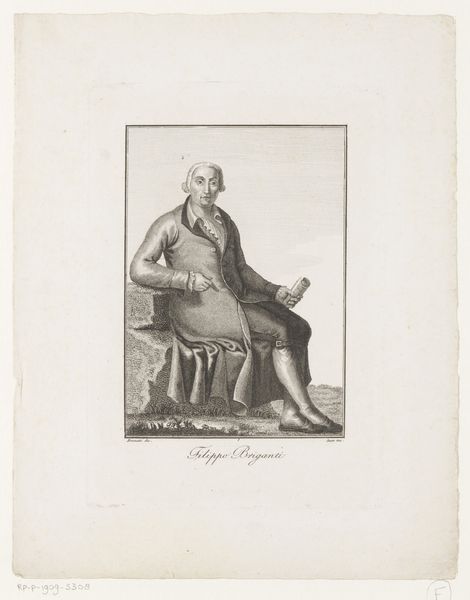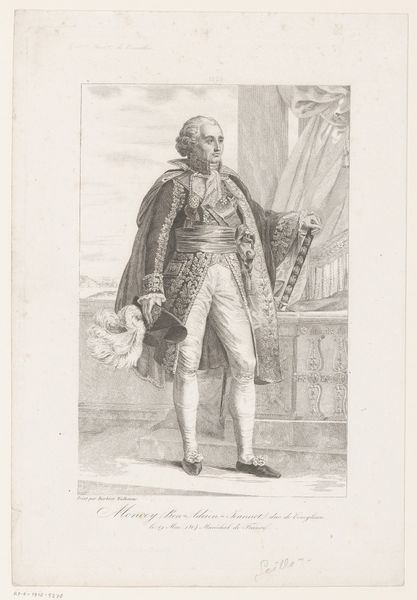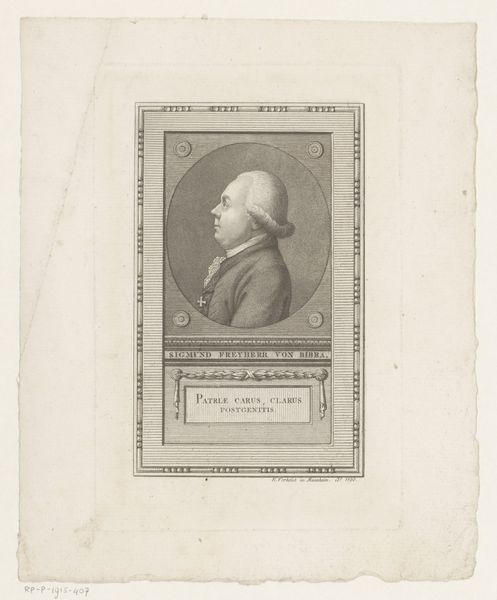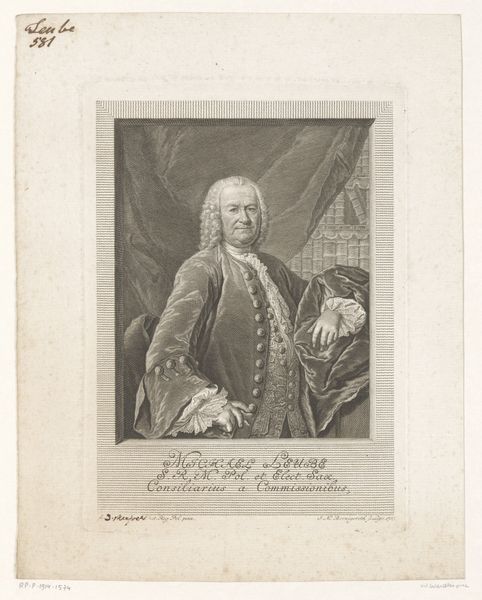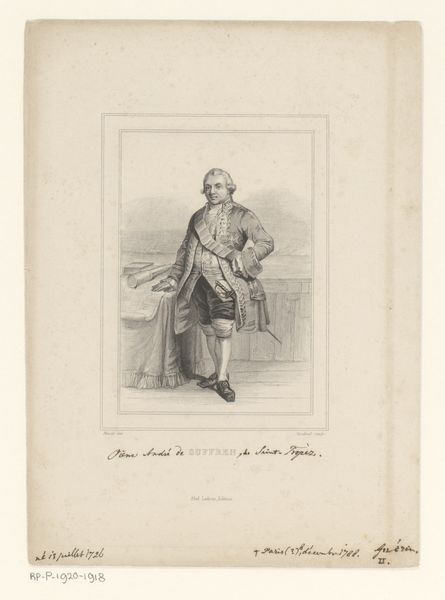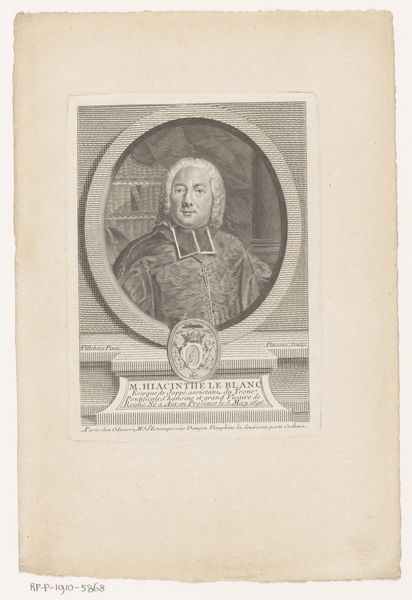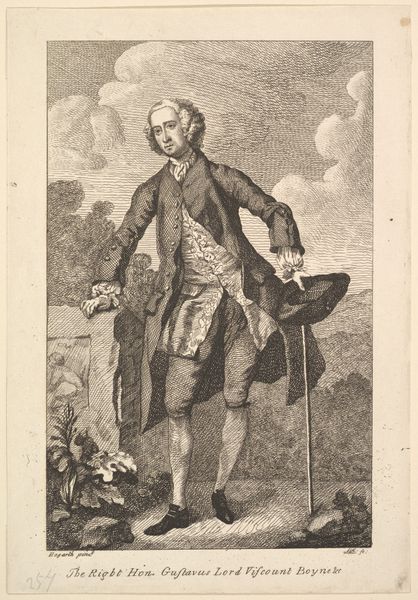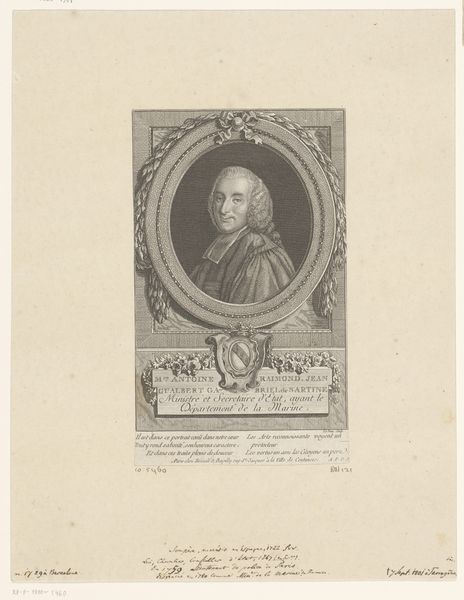
engraving
#
portrait
#
neoclacissism
#
old engraving style
#
classical-realism
#
genre-painting
#
engraving
Dimensions: height 218 mm, width 153 mm
Copyright: Rijks Museum: Open Domain
Editor: This is "Portrait of the Poet Giancarlo Passeroni," an engraving made between 1783 and 1840 by Luigi Rados. It feels like a stage, doesn’t it? Passeroni’s pose is quite theatrical, almost as if he is making a grand gesture for the audience. How do you interpret this work, thinking about the cultural significance? Curator: Indeed! Notice how Passeroni presents the object in his hand, his arm is in front as if being displayed as evidence. I suspect that is related to how laurels signify victory. Poets, in that era, sought cultural immortality through their verses. Look closely, do you notice any other symbols here? Editor: I see Mount Vesuvius in the background. Is that symbolic as well? Curator: Precisely. The ever-present volcano might represent both the destructive power of nature and the eternal inspiration it offers. So it might echo the permanence the poet hopes to find through art. Editor: It's fascinating how many layers of meaning can be embedded in a portrait like this! It’s more than just a likeness; it's a carefully constructed image meant to communicate very specific ideas. Curator: It’s about cultural memory, yes. Consider also the formal elements – the clean lines of Neoclassicism, the realistic detail, all designed to create a sense of lasting value and importance for both the poet and his work. The engraving ensures the poets legacy is shared through generations to come. Editor: So, reading images like this allows us to connect to cultural values and beliefs in a way words often cannot. Curator: Precisely! Each detail builds to immortalise Passeroni, and through our viewing, he achieves his desires.
Comments
No comments
Be the first to comment and join the conversation on the ultimate creative platform.
